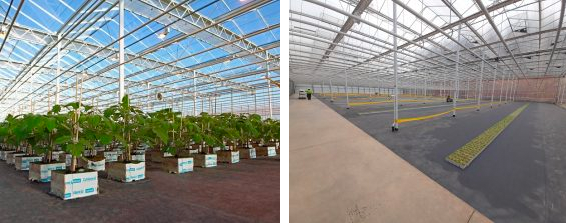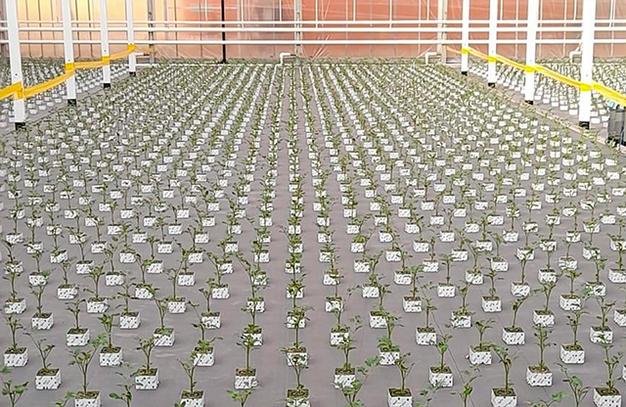Arjan Kouwenhoven’s company Fonte Verde Agro is located in Adradas, not far from Sao Paulo in Brazil: more than 1.5 hectares of the growing facility of two hectares are used for growing tomatoes. This is a glass greenhouse and that is unique for the South American country - but there's more that is unique about this facility. The young tomato plants are being grown on a cultivation floor. ErfGoed levelled the land and installed the cultivation floors for growing the young tomato plants.

"Growers are usually surprised when they hear about growing vegetable plants on a cultivation floor," Hugo Paans with Erfgoed says. "It is believed they are only grown on concrete and are afraid that a porous cultivation floor involves a risk."
Yet sometimes it is the only way to go. Kouwenhoven opted for the ErfGoedFloor because of the local high temperatures and high light intensity, which meant a concrete floor would have become too hot. With an ErfGoedFloor, he can allow water in to keep the floor cool and establish a good microclimate. The second crop is now on the floor. Kouwenhoven: “Everything is positive so far: the floor looks neat, water distribution is uniform and the yield is very good.”

More vigorous plants
Hugo adds that more growers notice vigorous plants with larger and healthier root systems. "Every time we have tests conducted, whether with vegetable plants or, for example, Phalaenopsis, they tell us that the root system of the crop in question develops better on our floor than on other cultivation systems. And, by definition, a healthy root system means a vigorous plant.."
Another major benefit of the cultivation floor is that it makes growers much more flexible, Hugo says. "The structure of the floor makes it suitable for all pot sizes. I am sometimes surprised myself to see how easy it is to switch between crops and how many crops you can actually grow on it. And that includes much more than just pot and bedding plants. On top of all that, plants demonstrably do better on the cultivation floor and they also grow faster. So you also have a shorter growing period."
All good and well - but what about the hygiene? Does a porous cultivation floor involves a risk? "In the Netherlands, the idea was that concrete is more hygienic. Wageningen University Greenhouse Horticulture has now clearly proven that the hygiene protocol for the prevention of quarantine organisms on this floor can be implemented effectively and efficiently," Hugo concludes.
For more information:
ErfGoed
Bredeweg 59
2751 GH Moerkapelle
Netherlands
T +31 (0)79 593 38 00
[email protected]
www.erfgoed.com
